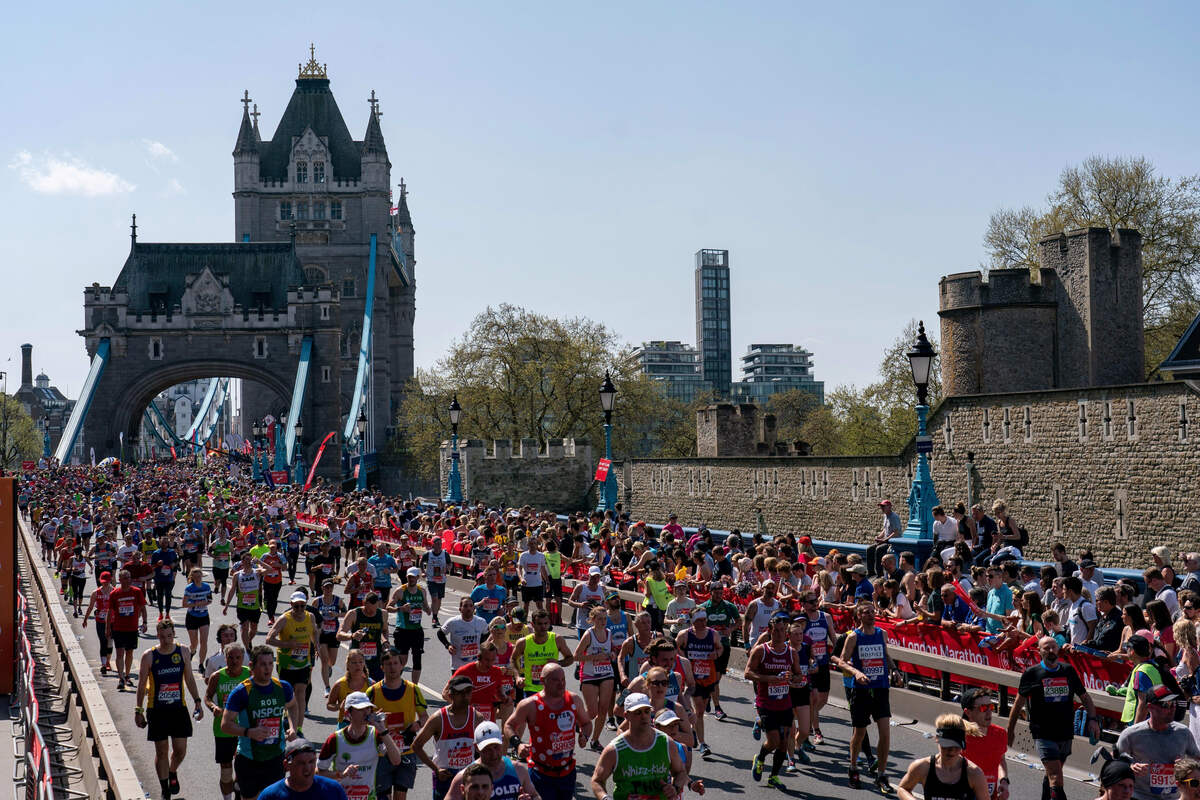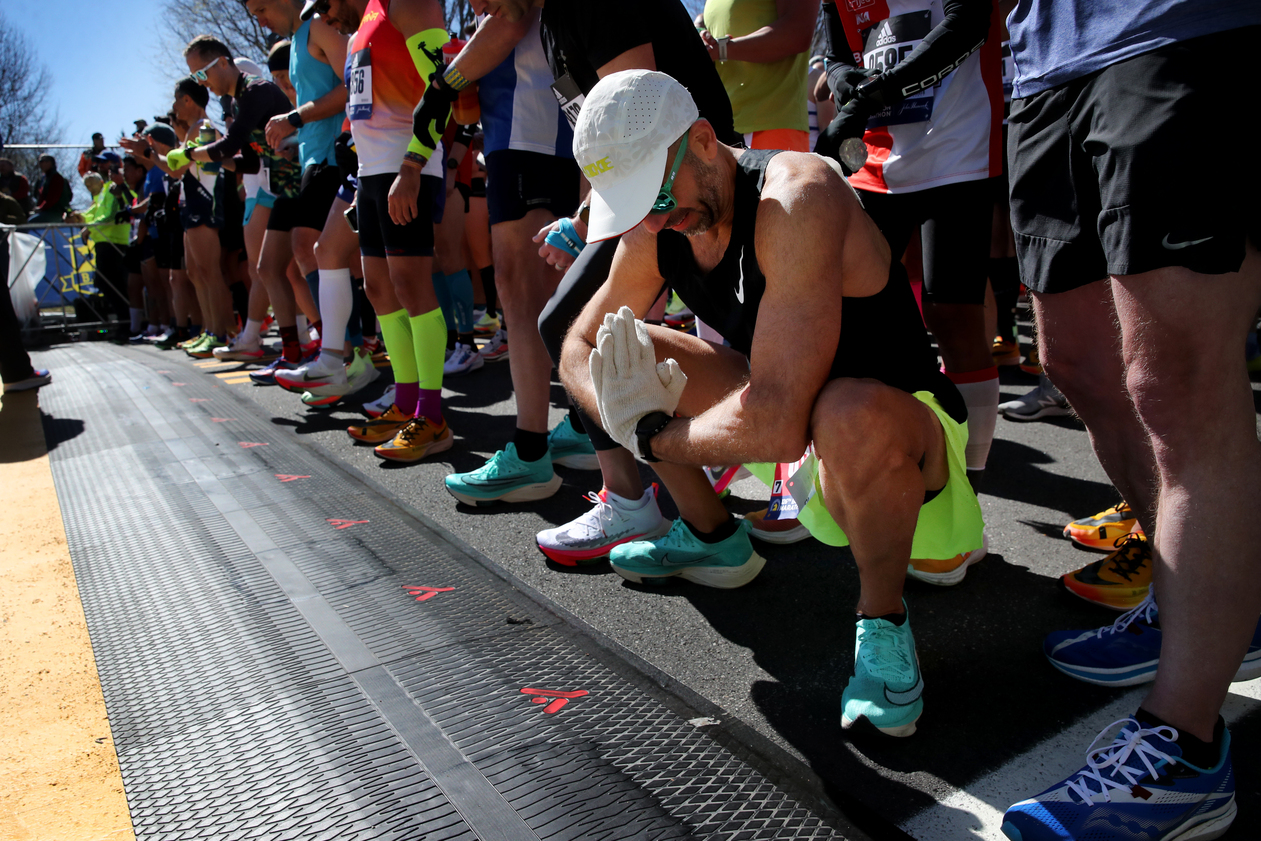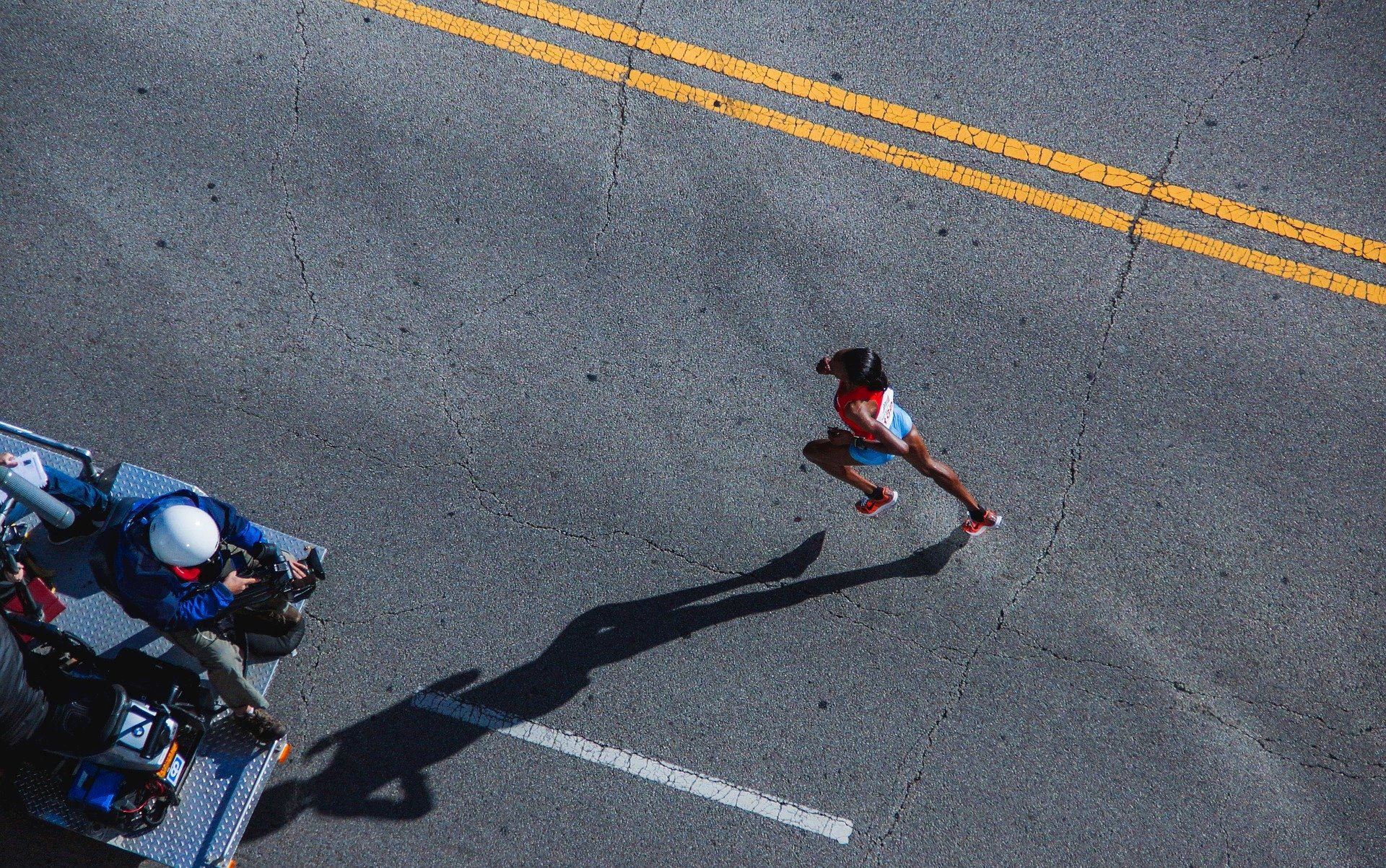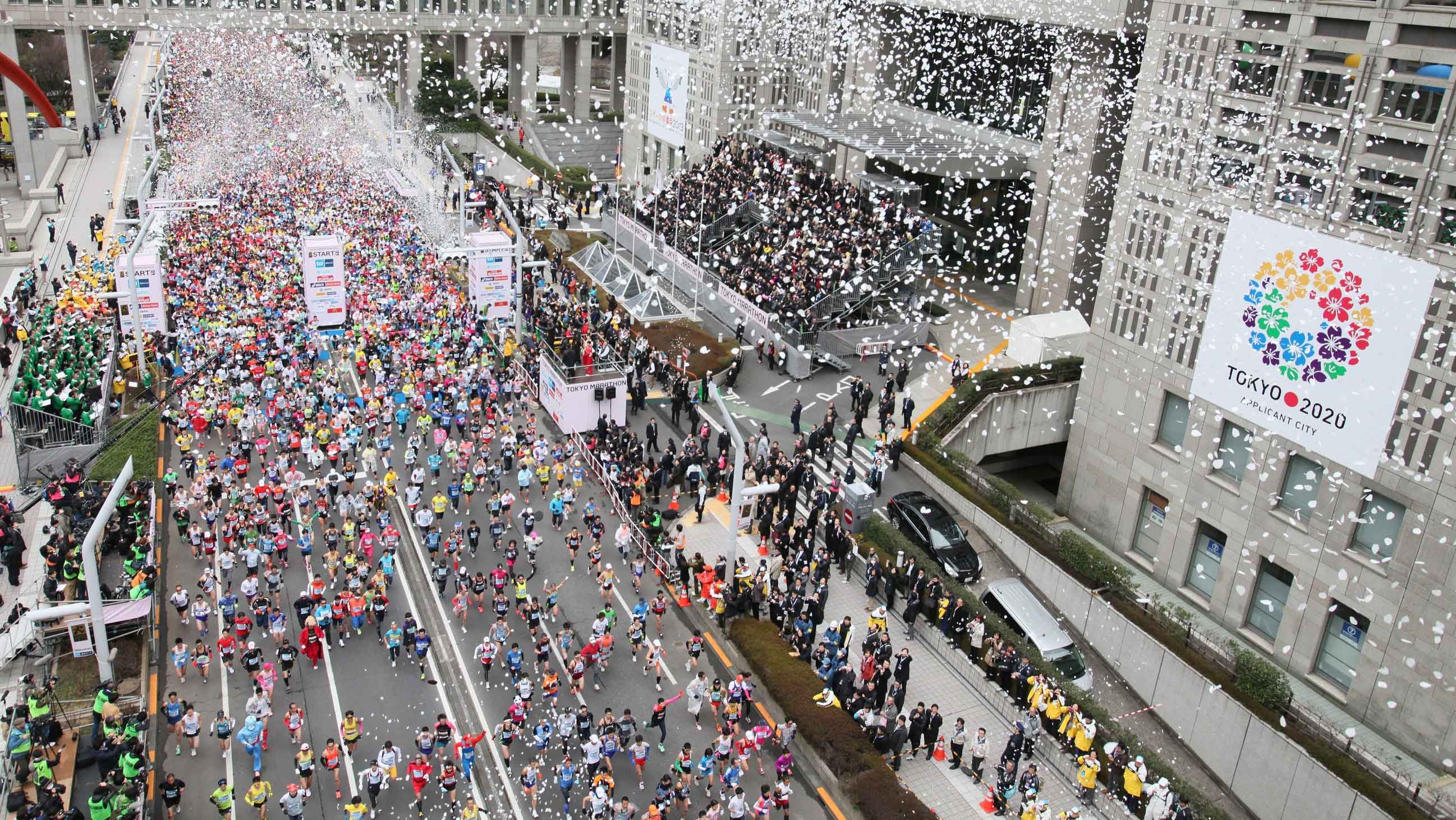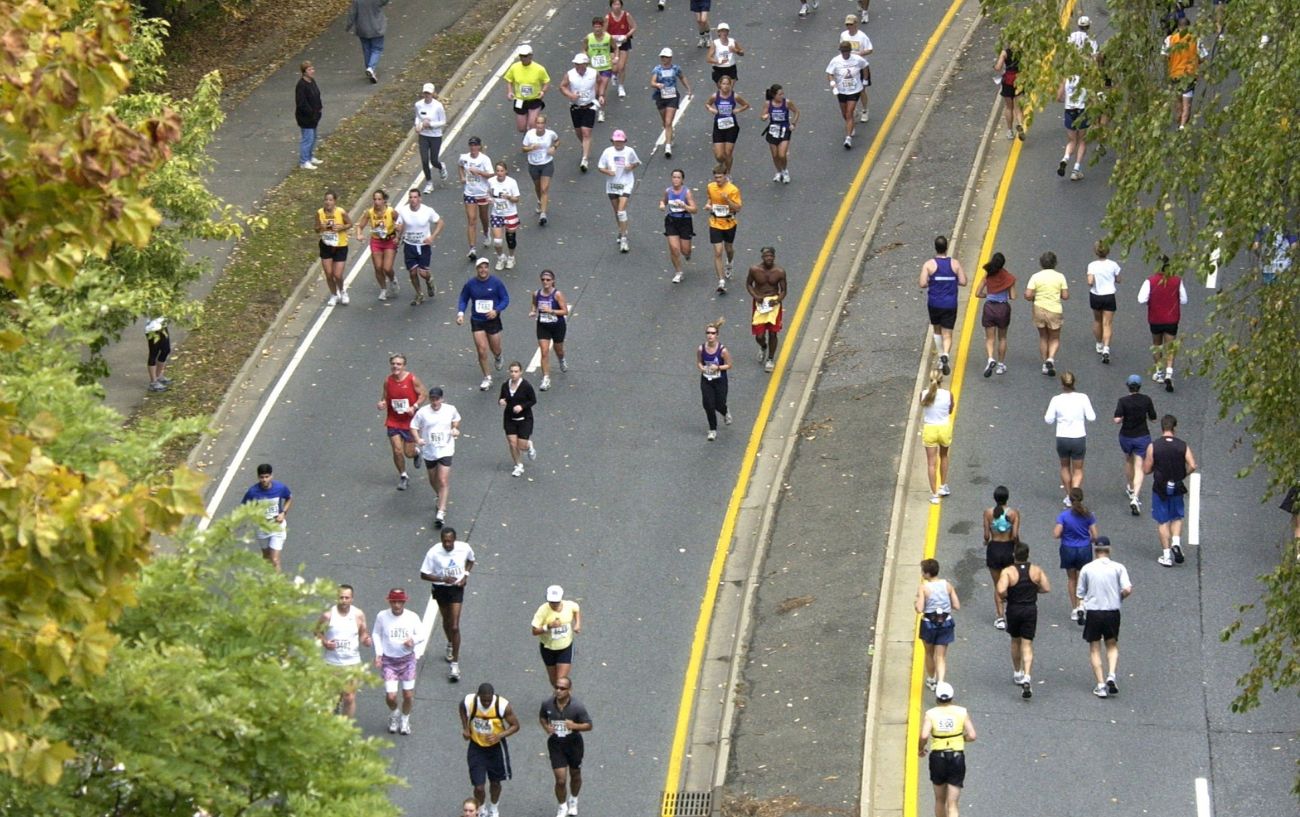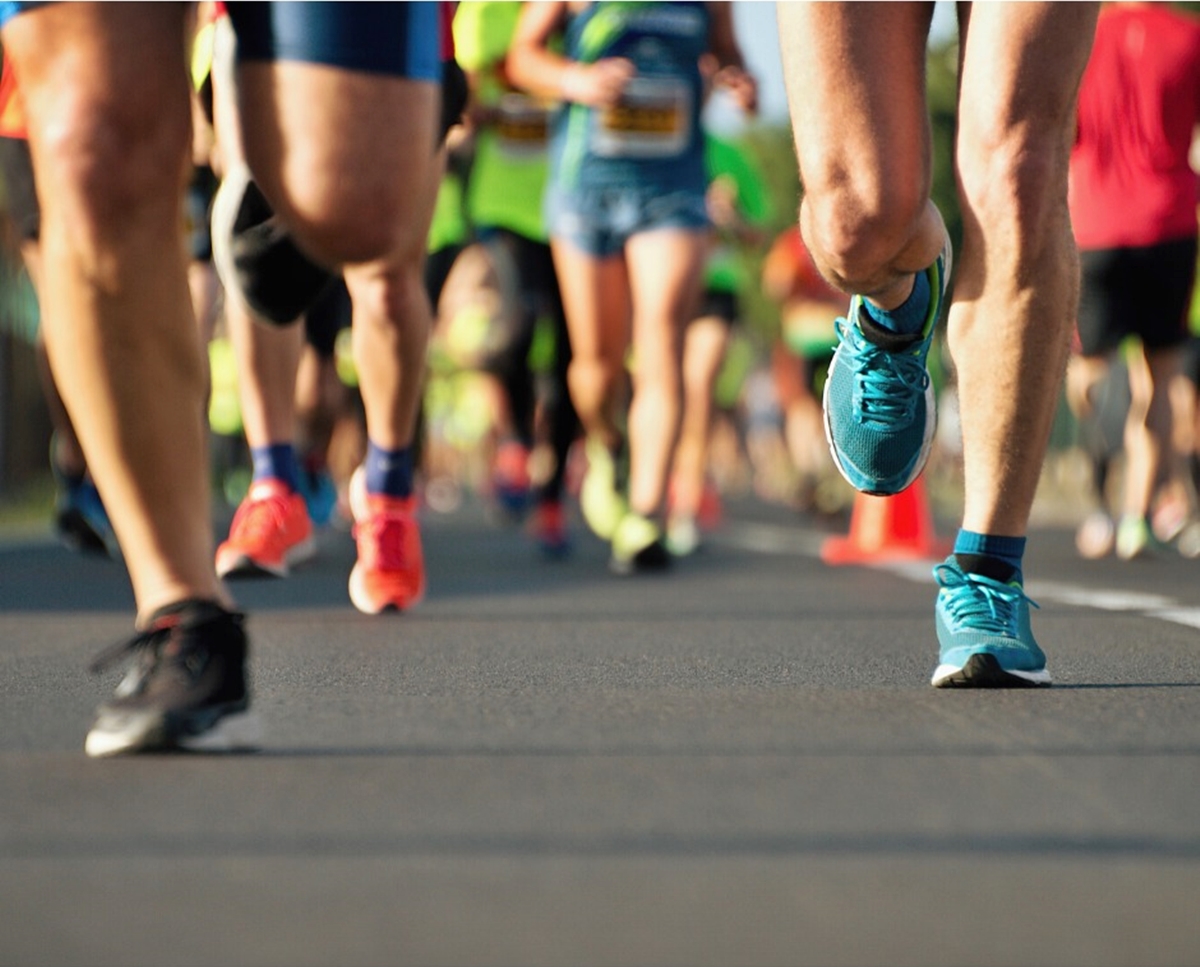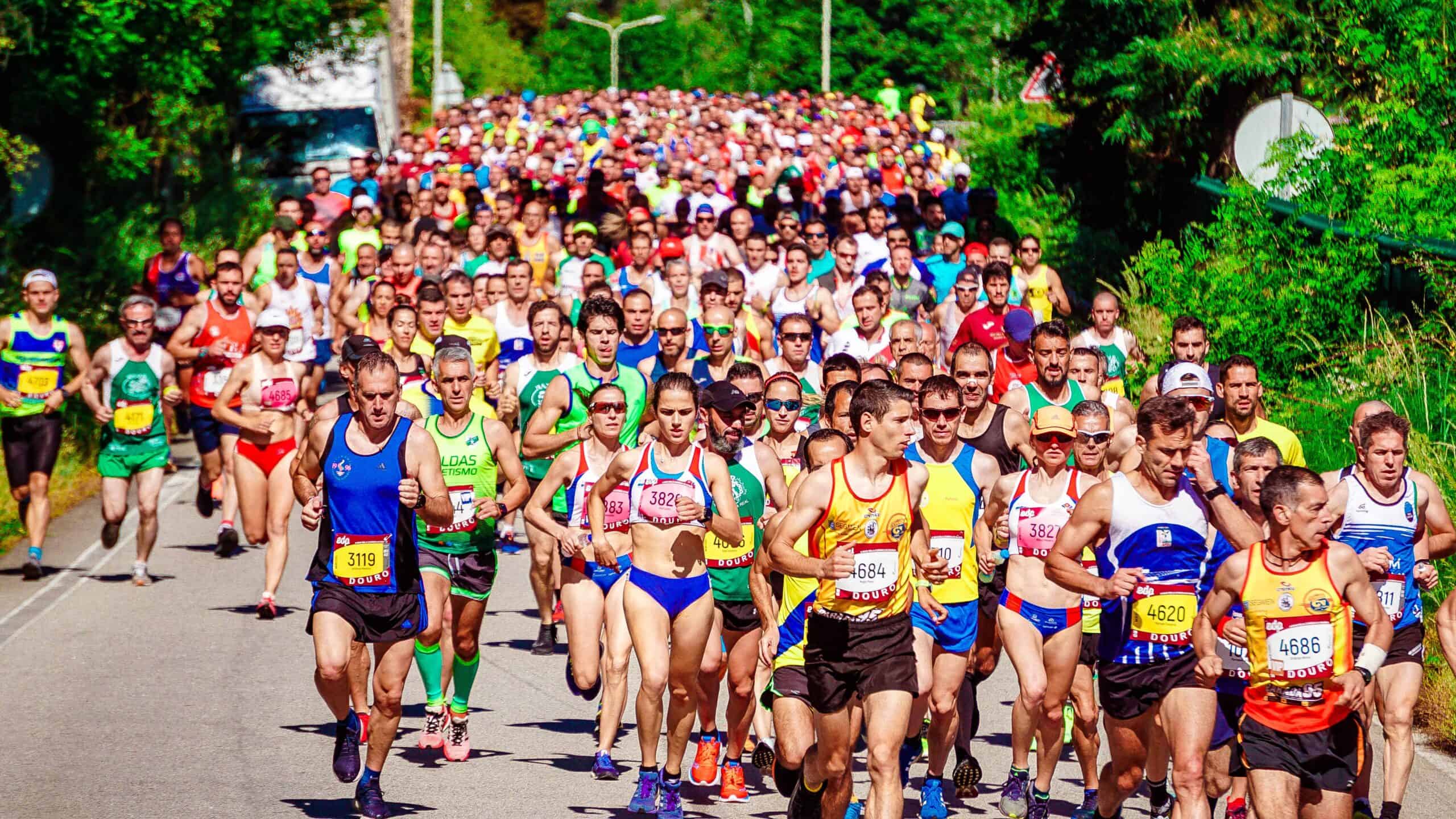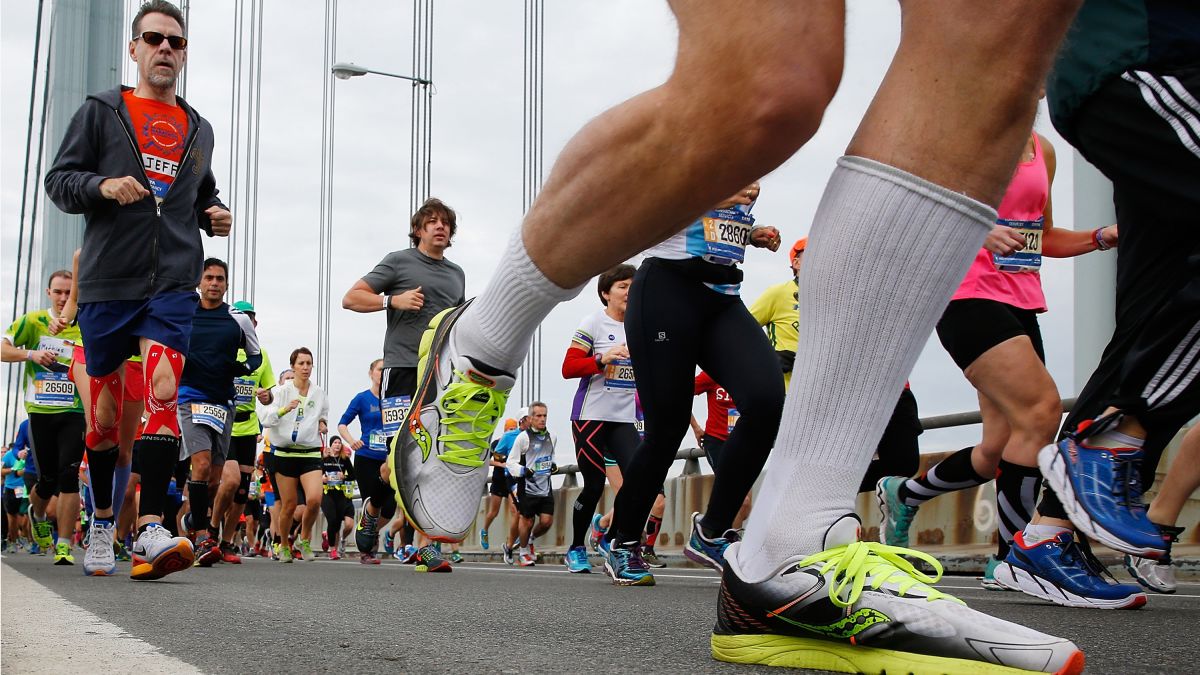

Featured
How Many Steps In A Marathon
Modified: August 21, 2023
"Featured article answering the question: How many steps in a marathon? Discover the steps involved in completing this iconic race. Get ready for an exciting and challenging journey!"
Introduction
Welcome to the exciting world of marathons! Whether you’re a seasoned runner or a first-timer, understanding the intricacies of this endurance event is essential. One question that often comes up when discussing marathons is, “How many steps are there in a marathon?” In this article, we will delve into this fascinating topic and explore factors that contribute to the number of steps taken during a marathon.
Running a marathon is not just about covering a fixed distance; it’s a journey that pushes the limits of physical and mental endurance. The ability to sustain a steady rhythm of strides is crucial to maintain pace and effectively conquer the 26.2-mile challenge. But how many steps does it actually take to complete a marathon?
To answer this question, we need to examine various factors, including the average distance of a marathon, individual stride length, and running technique. Additionally, understanding the history of marathons can provide valuable insights into how this iconic race evolved over time.
Whether you aspire to participate in a marathon or simply have a curiosity about the mechanics behind it, this article will shed light on the number of steps involved and provide insights into optimizing your performance on the big day.
Understanding the Marathon
Before we dive into the realm of step counts, it’s essential to grasp the fundamentals of what a marathon entails. A marathon is a long-distance road race with a standardized distance of 26.2 miles or 42.195 kilometers. It requires tremendous physical and mental strength, as participants aim to complete the course in the shortest possible time.
The history of marathons dates back to ancient Greece, where it is believed to have originated in 490 B.C. Legend has it that a Greek soldier named Pheidippides ran from the city of Marathon to Athens to deliver news of a military victory. Upon reaching Athens, he exclaimed, “We have won!” before collapsing and eventually passing away.
Today, marathons have become a global phenomenon, attracting athletes and enthusiasts from all walks of life. The challenge lies not only in covering the distance but also in maintaining a consistent pace for an extended period. Elite runners strive to finish marathons in under two hours, while recreational runners aim to cross the finish line within a few hours.
Running a marathon requires dedicated training and an understanding of pacing, hydration, nutrition, and mental resilience. The ability to sustain a consistent stride is critical to optimize performance and minimize the risk of exhaustion or injury. By understanding the intricacies of marathons, we can begin to explore the factors that contribute to the number of steps taken during this monumental endurance event.
History of Marathons
The history of marathons can be traced back to the ancient Greek battle of Marathon in 490 B.C. The event that inspired the marathon as we know it today occurred during the Persian Wars. Legend has it that a Greek soldier named Pheidippides was sent from the city of Marathon to Athens to deliver news of a significant military victory against the Persians.
Pheidippides ran approximately 26 miles, the distance between Marathon and Athens, without stopping to deliver the news. Upon reaching Athens, he announced, “We have won!” before collapsing and passing away. Pheidippides’s heroic act inspired the creation of the marathon race in modern times.
The marathon’s inclusion in the modern Olympic Games is attributed to Pierre de Coubertin, the founder of the International Olympic Committee. The first official Olympic marathon took place in 1896 during the Athens Games, and it covered the distance from the Marathon Bridge, near the city of Marathon, to the Olympic Stadium in Athens.
Inspired by the success of the Olympic marathon, the Boston Athletic Association (BAA) organized the first Boston Marathon in 1897. It quickly gained popularity and became one of the most prestigious and sought-after marathons in the world.
Over the years, the popularity of marathons grew exponentially, leading to the establishment of various marathon events worldwide. Today, major cities host annual marathons that attract thousands of participants from around the globe.
The history of marathons is not just defined by the iconic races themselves, but also by the incredible stories of runners who have conquered the distance. From Kathrine Switzer, the first woman to officially run the Boston Marathon in 1967, to Eliud Kipchoge, who broke the two-hour barrier in a staged marathon in 2019, these athletes have pushed the boundaries and inspired countless others to take on the marathon challenge.
As marathons continue to captivate runners and spectators alike, the rich history and tradition associated with these events serve as a testament to the enduring human spirit and the pursuit of achievement.
Average Distance of a Marathon
The standard distance of a marathon is 26.2 miles or 42.195 kilometers. But have you ever wondered why the distance is so specific? The origin of the marathon distance can be traced back to the 1908 London Olympic Games.
Originally, the marathon distance for the 1908 Olympic Games was planned to be 25 miles, following the route from Windsor Castle to the Olympic Stadium in London. However, the distance was extended by 385 yards (or approximately 0.2 miles) so that the royal family could have a better view of the finish line from their box at the stadium.
Since then, the extended distance of 26.2 miles has become the internationally recognized standard for marathons. Consequently, every official marathon race, whether it’s the Boston Marathon, New York City Marathon, or any other marathon held worldwide, adheres to the 26.2-mile distance.
In terms of the metric system, marathons are measured as exactly 42.195 kilometers. This precise measurement ensures consistency across all international marathons, allowing runners to compare times and performances accurately.
It is important to note that not all marathons strictly adhere to the standard distance. Some races may have slight variations due to logistical reasons or unique course layouts. Nevertheless, any race that falls within the range of 26 to 27 miles can still be considered a marathon.
Whether you’re a beginner considering your first marathon or an experienced runner aiming to improve your personal best, understanding the standard distance of 26.2 miles (or 42.195 kilometers) is essential. It sets a clear goal and provides a benchmark for training and race-day preparations.
Now that we have a grasp of the average distance of a marathon, let’s dive deeper into the fascinating world of steps and determine just how many it takes to conquer this iconic race.
Determining the Number of Steps in a Marathon
Calculating the exact number of steps taken during a marathon can be a challenging task. It depends on various factors, including an individual’s stride length, running technique, and the terrain of the course. While we can’t provide an accurate step count for every runner, we can explore some general estimates and considerations.
The average stride length for a runner is approximately 2.5 to 3 feet. To determine the number of steps taken in a marathon, we can divide the distance of 26.2 miles (or 42.195 kilometers) by the average stride length. This calculation will give us an approximate estimate of the number of steps.
Let’s take the lower end of the average stride length range, which is 2.5 feet. Converting the marathon distance of 26.2 miles to feet gives us approximately 138,336 feet. Dividing this distance by 2.5 feet, we get an estimated step count of around 55,334 steps.
Keep in mind that this is a rough estimate, as stride length can vary significantly among individuals. Some runners have shorter strides, while others may have longer strides. Additionally, factors such as fatigue, pacing strategy, and changes in terrain can affect stride length and, consequently, the number of steps taken during a marathon.
It’s also worth noting that modern technology, such as fitness trackers and smartwatches, can provide more accurate step counts during a marathon, taking into account individual movement patterns and stride length variations. These devices utilize accelerometers and motion sensors to measure steps and distance covered.
While the number of steps taken during a marathon may not be an exact science, understanding the approximate step count can provide runners with insights into the physical demands of the race. It also emphasizes the importance of maintaining efficient running form, optimizing stride length, and finding a comfortable rhythm throughout the race.
As we continue our exploration of marathons and step counts, let’s explore some additional factors that can influence the number of steps taken during the race.
Factors Affecting the Number of Steps
The number of steps taken during a marathon can vary depending on several factors that influence an individual’s running style and efficiency. Understanding these factors can help runners optimize their steps and improve their overall performance. Let’s explore some key factors that affect the number of steps taken during a marathon.
1. Stride Length: Stride length is the distance covered with each step. It can be influenced by factors such as height, leg length, flexibility, and running technique. Runners with longer strides generally take fewer steps to cover the same distance compared to those with shorter strides.
2. Pacing Strategy: The pace at which a runner completes a marathon can affect the number of steps taken. A consistent and even pace throughout the race results in a relatively stable stride length and step count. However, if a runner starts too fast and fatigues later in the race, it can lead to a shorter stride length and an increased step count.
3. Terrain and Elevation: The course terrain, such as flat, hilly, or uneven surfaces, can impact stride length and step count. Uphill sections typically require shorter, faster steps, while downhill stretches allow for longer, more leisurely strides. Uneven terrain may also cause variations in stride length and step count.
4. Fatigue and Energy Level: As the marathon progresses, fatigue sets in, affecting muscle coordination and energy levels. This can lead to a decrease in stride length and an increase in step count. Maintaining proper hydration, nutrition, and energy management throughout the race can help mitigate this impact.
5. Running Form and Efficiency: Good running form promotes optimal mechanics and energy conservation, impacting stride length and step count. A balanced and efficient running posture, along with proper foot strike and arm movement, can help reduce unnecessary movements and enhance stride length.
6. Shoe Selection: The type of running shoes worn can also influence stride length and step count. Shoes that provide proper support, cushioning, and a comfortable fit can contribute to an efficient running gait, helping to maintain a consistent stride length and minimize unnecessary steps.
It’s important to note that the relationship between stride length, step count, and performance is highly individualized. What works for one runner may not work for another. It is recommended to experiment with different running techniques, training strategies, and footwear to discover the best approach that suits your unique physiology and running style.
By acknowledging these factors and making appropriate adjustments, runners can optimize their steps, conserve energy, and improve overall efficiency during a marathon. Every small increment in stride length or reduction in step count can contribute to a more enjoyable and successful race experience.
Techniques to Optimize Steps in a Marathon
When it comes to running a marathon, every step counts. Optimizing your steps can make a significant difference in your performance and overall experience. Here are some techniques to help you optimize your steps during a marathon.
1. Work on Your Running Form: Maintaining proper running form can improve your stride length and efficiency. Focus on keeping your body aligned, with a slight forward lean, relaxed shoulders, and a smooth arm swing. Engage your core and avoid excessive side-to-side movements.
2. Focus on Cadence: Cadence, or stride rate, is the number of steps taken per minute. Aim for a cadence of around 180 steps per minute, as the research suggests that this may promote efficient running. Increase your cadence by taking quicker, shorter strides rather than longer strides.
3. Gradually Increase Stride Length: While it’s important to avoid overstriding, gradually increasing your stride length can help you cover more ground with fewer steps. Focus on taking longer strides from the hips while maintaining a balanced and natural rhythm.
4. Practice Hills and Downhill Running: Incorporate hill training into your preparation to improve your ability to tackle inclines efficiently. On uphill sections, take shorter, quicker steps, and maintain a steady effort. On downhill stretches, allow your stride to lengthen naturally and take advantage of the momentum.
5. Interval Training and Form Drills: Include interval training and form drills in your training routine. Speed intervals and drills like high knees, butt kicks, and strides can improve your muscle coordination and running economy, resulting in more efficient and powerful strides.
6. Strength Training: Incorporate strength training exercises focusing on your lower body, such as squats, lunges, and calf raises. Strong leg muscles can help generate more power and improve stride length.
7. Listen to Your Body: Pay attention to any signs of fatigue or discomfort during training or the race itself. Taking short walking breaks or adjusting your pace can help you manage fatigue and potentially optimize your steps by maintaining a consistent rhythm.
8. Get Proper Footwear: Wearing the right pair of running shoes that provide support, cushioning, and a proper fit can enhance your running efficiency. Ensure that your shoes are appropriate for your foot type and running style.
Remember, optimizing your steps is a gradual process that requires practice and patience. Make adjustments and experiment during your training to find the right combination of techniques that work for you. By fine-tuning your stride length and efficiency, you can experience better performance and enjoyment throughout your marathon journey.
Training for a Marathon
Training for a marathon requires a well-structured plan that gradually builds your endurance, strength, and overall fitness. Here are some key considerations and tips to help you prepare for the ultimate test of endurance.
1. Set Realistic Goals: Start by setting realistic goals for your marathon. Assess your current fitness level and determine a target finish time or a performance goal that aligns with your abilities and training timeline.
2. Follow a Training Plan: Seek out a reputable training plan that suits your experience level and adapts to your schedule. A well-designed plan will include a mix of long runs, speed work, tempo runs, rest days, and cross-training activities.
3. Gradually Increase Mileage: Increase your mileage slowly and progressively, allowing your body to adapt to the demands of longer distances. Aim for a gradual increase of 10% in mileage each week to minimize the risk of overuse injuries.
4. Incorporate Long Runs: Long runs are a crucial component of marathon training. Gradually increase the duration of your long runs to build your stamina and mental fortitude. Aim to complete at least a few runs that cover the full marathon distance during your training.
5. Include Speed Work: Incorporate speed work sessions, such as interval training and tempo runs, to improve your running efficiency, speed, and lactate threshold. These workouts help develop your cardiovascular system and enhance your ability to sustain faster paces.
6. Practice Race Day Nutrition: Train your body to adapt to marathon nutrition by practicing your fueling and hydration strategies during your long runs and intense training sessions. Find the right balance of carbohydrates, electrolytes, and fluids that work best for your body.
7. Take Rest and Recovery Seriously: Include regular rest days in your training schedule to allow your body to recover and repair. Adequate sleep, stretching, foam rolling, and other recovery techniques can prevent injuries and keep you fresh for your next training session.
8. Stay Consistent: Consistency is key in marathon training. Stick to your plan, even when motivation wanes or life gets busy. Trust the process and remember that consistent training over time is what will help you reach your goals.
9. Listen to Your Body: Pay attention to any signs of injury or excessive fatigue. It’s better to take a short break or seek professional advice than risk long-term setbacks. Incorporate cross-training activities, such as swimming or cycling, to give your body a break from running while maintaining fitness.
10. Mental Preparation: Don’t neglect the mental aspect of marathon training. Develop mental strategies to stay focused, motivated, and positive during challenging training runs and on race day. Visualize success and embrace the journey.
Remember, training for a marathon is a transformational experience that requires dedication, patience, and resilience. Stay committed to your training plan, make adjustments as needed, and enjoy the process of becoming marathon-ready.
Conclusion
Embarking on a marathon journey is a challenging and rewarding endeavor. From understanding the history and average distance of a marathon to exploring the factors that affect the number of steps taken, we have unraveled the intricacies of this iconic endurance event.
Calculating the exact number of steps in a marathon may not be an exact science, but by focusing on optimizing your stride length, practicing proper running techniques, and following a well-structured training plan, you can enhance your performance and efficiency.
Training for a marathon requires commitment, discipline, and a holistic approach. Gradually increasing your mileage, incorporating speed work, and providing your body with proper rest and nutrition are key elements of a successful training regimen. Remember to listen to your body, tailor your training to your individual needs, and stay flexible in adjusting your plan as necessary.
Throughout your marathon training journey, it’s important to embrace both the physical and mental challenges. Develop mental strategies to stay motivated and positive, visualize success, and remember that every step you take is a step closer to achieving your goal.
Whether you’re a seasoned runner or a beginner, the joy of crossing the marathon finish line is an incredible achievement. It’s not just about the number of steps taken; it’s about the determination, perseverance, and personal growth that come with the journey.
So, lace up your running shoes, set your sights on the marathon distance, and embark on this extraordinary adventure. With proper preparation, training, and a resilient mindset, you’ll conquer the marathon and experience the incredible sense of accomplishment that comes with it.
Remember, the number of steps may be significant, but the memories, lessons learned, and the indomitable spirit you cultivate along the way are what truly make the marathon experience unforgettable.
